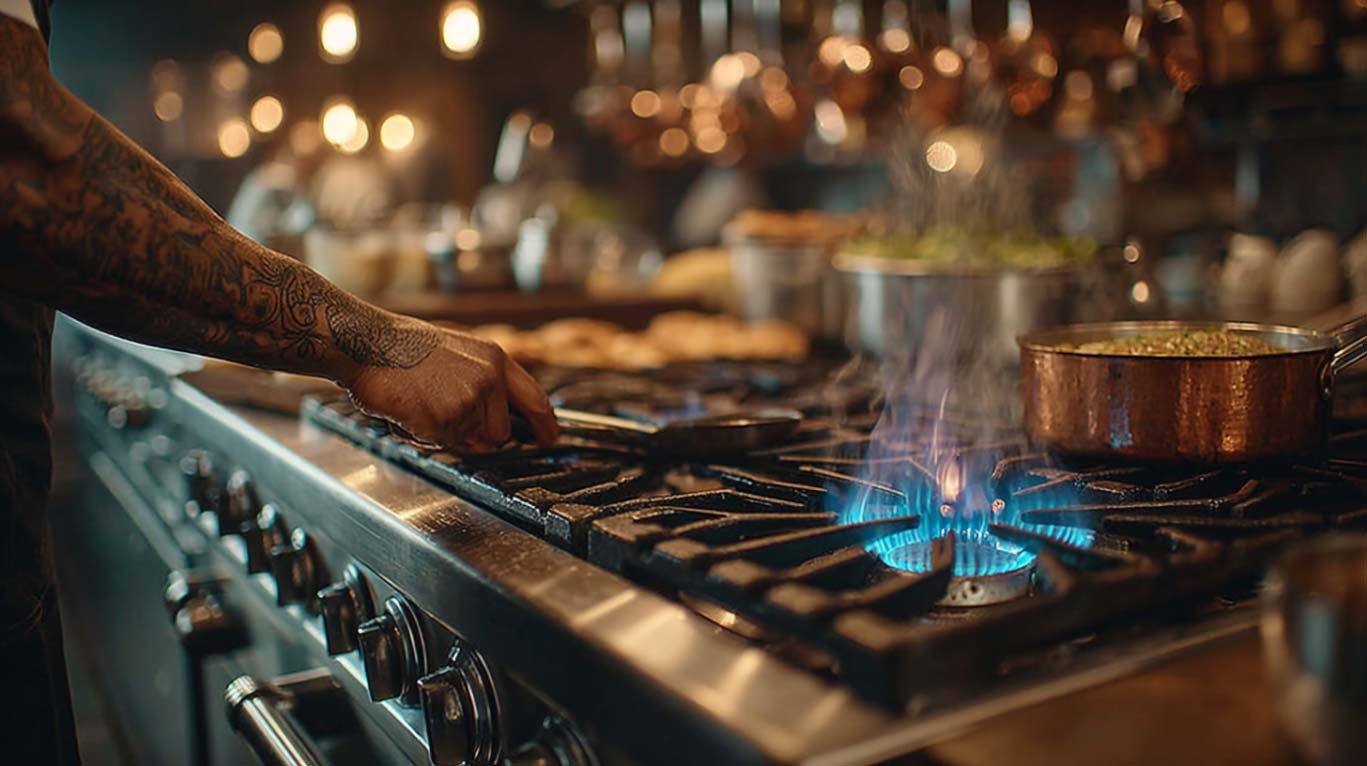Choose your path and get a fast SME energy quote or a domestic energy switching quote in minutes. Upload a recent bill, compare energy rates, and let us handle the switch—no supply interruption, no hidden fees, full commission disclosure.

UK restaurants can achieve modest but meaningful savings by switching commercial gas tariffs, with annual reductions typically ranging from £33 for small cafés consuming 4,000 kWh to £311 for larger establishments using 22,000 kWh. Unit rates vary considerably between suppliers, from 5.5p to 7.4p per kWh, whilst standing charges range from 30.8p to 128.2p daily. Realistic savings generally fall between 10-20% of total gas costs, with timing and establishment size playing vital roles. Understanding supplier rate structures and market fluctuations reveals strategic opportunities for cost optimisation.
Unlike their domestic counterparts, UK restaurants operate without the protection of a price cap on commercial gas tariffs, leaving them exposed to the full volatility of wholesale energy markets.
This deregulated environment creates pricing structures determined by supplier competition and market conditions. Rates incorporate both standing charges and unit costs that fluctuate continuously.
In 2025, restaurant operators face compounding financial pressures beyond energy costs.
April’s minimum wage increases disproportionately impact the hospitality sector, where labour represents a substantial operational expense.
With inflation forecast at approximately 3.7% in Q3 2025 and energy prices rising simultaneously, profit margins remain severely constrained. Catering industry inflation, which peaked at 12.6% in 2022-23, has moderated to 3.8% by May 2025, though it continues to exceed the Bank of England’s target.
Strategic market timing combined with comprehensive supplier comparison enables restaurants to identify optimal contract windows that align wholesale price movements with their operational requirements.
Effective energy data capture allows restaurant operators to profile their usage patterns and benchmark tariffs using evidence rather than estimates.
Comparing unit rates, standing charges, and contract terms across multiple suppliers reveals significant variations that directly impact monthly operational budgets.
These factors make strategic energy procurement essential, as wholesale market fluctuations present both risks and opportunities for cost optimisation through carefully timed contract negotiations.
When evaluating commercial gas tariffs, suppliers place restaurant operations into distinct pricing categories based primarily on establishment size and consumption volume.
Small cafés with 2-3 appliances face certification costs of £150-£200 and typically receive standard commercial rates.
Small cafés with minimal appliances face higher per-unit costs despite lower certification expenses, receiving standard rates without volume discount eligibility.
Mid-sized restaurants operating 4-6+ appliances encounter £250-£400 in compliance expenses whilst accessing improved pricing tiers.
Large hotel kitchens with 6-10+ appliances pay £400-£600+ for certifications but qualify for preferential rate structures.
Suppliers assess 12-month consumption patterns to determine rate eligibility, with higher annual usage releasing volume discounts unavailable to smaller operations.
Multi-location chains gain additional advantages by aggregating consumption across sites, strengthening negotiation advantages.
Business classification, credit ratings, and operational history further influence which tariff programmes become accessible.
Bespoke energy tendering services can structure validated consumption volumes and market timing to secure more competitive contracts for high-usage restaurant operations.
Only Gas Safe registered engineers can conduct the inspections required to maintain compliance across these commercial operations.
This creates significant cost disparities between establishments of different scales.
Comprehending eligibility requirements means little without examining how substantially supplier rates differ in practice. Unit rate variations reveal significant cost disparities, with Crown Gas & Power’s 5.5p per kWh representing 25.7% savings compared to British Gas’s 7.4p per kWh.
However, standing charges complicate this calculation considerably.
Key Rate Differences Affecting Restaurant Profitability:
Restaurant owners frequently overestimate potential savings from switching gas suppliers, making accurate calculations essential for informed decision-making.
Industry data reveals realistic expectations: takeaway and café operations consuming 4,000 kWh annually at 8.5p per kWh spend approximately £332.59, with potential savings of £33-66 through competitive tariffs.
Small cafés spending £332 annually on gas can realistically expect savings of £33-66 by switching to competitive tariffs.
Larger establishments using 22,000 kWh could save £156-311 annually.
Percentage savings typically range from 10-20% of total gas costs, depending on current supplier rates versus market alternatives.
These calculations must account for standing charges, contract length variations, and seasonal consumption fluctuations.
Pub and bar establishments benefit from lower unit rates around 7.3p per kWh due to higher consumption volumes of approximately 12,000 kWh annually.
This offers different savings opportunities than smaller operations. Restaurant operators should carefully consider whether fixed or variable tariffs best suit their business model, as fixed tariffs secured during favourable market conditions can provide cost stability against future price increases.
Strategic timing of gas tariff switches considerably impacts the savings restaurant operations achieve, with market conditions in 2025 presenting both opportunities and challenges.
Gas transfers increased 41% year-over-year in Q1 2025, with approximately 602,000 transfers representing heightened supplier competition.
However, global demand growth slowing to 1.5% creates potential downward pressure on wholesale prices.
Optimal switching strategies include: